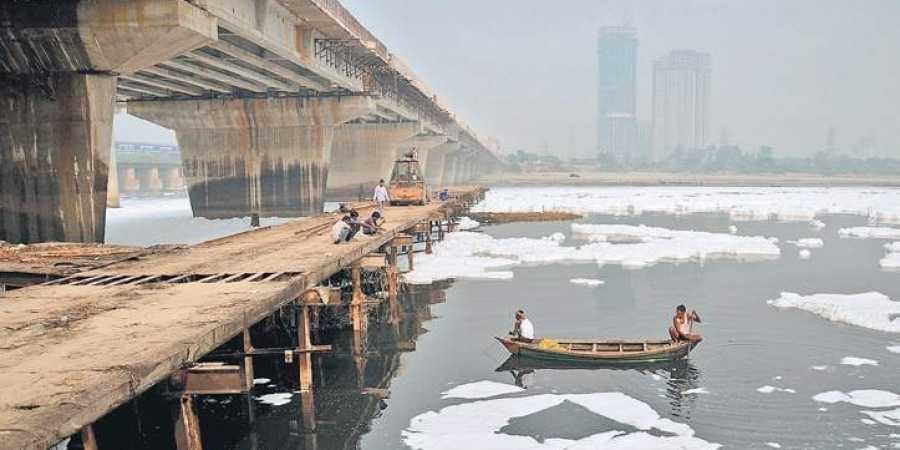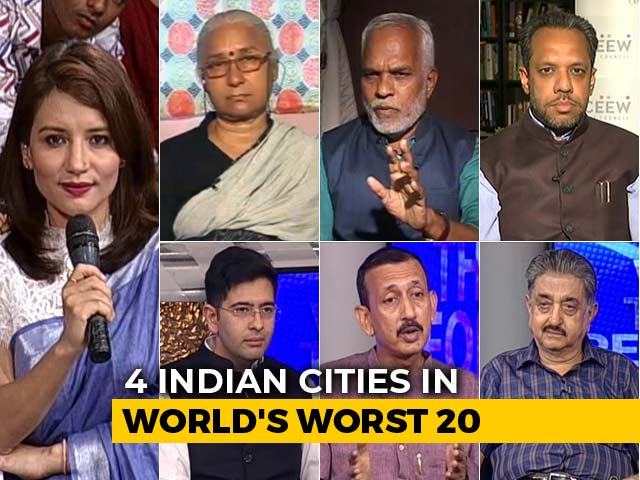Dirty Water in Delhi

According to the 2018 NITI Aayog Report, Delhi is among 21 Indian cities that is poised to run out of groundwater by 2020. It has also been reported that Delhi has been drawing 25 percent more groundwater than the natural recharge rate. Though it is the job of Central Ground Water to stop the exploitation of groundwater, their actions have not been effective. 60 percent of the water supplied by Delhi Jal Board comes from the Yamuna, around 34 percent from Ganga, and the rest is from groundwater. Yamuna river, the major provider of the city’s drinking water, runs heavy with pollutants and is thick with toxic waste and it becomes toxic because of all the sewage that is dumped into the river.
Manohar Khushalani, Rajeev Babar, Kuldeep Kumar and Sanjeev Kaushik were the four panelists invited for this discussion, for an expert opinion, on the dirty water problem faced in Delhi. This video gives an insight into the perspective of the general public and how they’re facing this problem.
TV9 has conducted surveys in 8 parts of Delhi, namely, Laxmi Nagar, Sangam Vihar, Chandni Chowk, Lajpat Nagar, Pitampura, New Delhi, Narela, and Yamuna Vihar. During this survey, they have asked people about their opinions on a few questions about the water and air pollution in Delhi. More details on this is given below.
They had also collected water samples from these areas and gave it for testing. After the results came out, they found out that all the samples that were collected from the 8 parts of Delhi which were surveyed had contaminated and undrinkable water.
Questions asked by TV9 to general public:
Is the water that you receive dirty or unfit for drinking?
| Yes | No | Don’t Know | |
| Laxmi Nagar | 80% | 7.5% | 12.5% |
| Sangam Vihar | 75% | 15% | 10% |
| Chandni Chowk | 80% | 15% | 5% |
| Lajpat Nagar | 80% | 16% | 4% |
| Pitampura | 57.5% | 35% | 7.5% |
| New Delhi | 90% | 5% | 5% |
| Narela | 92.5% | 5% | 2.5% |
| Yamuna Vihar | 45% | 40% | 15% |
This means that on an average, 75 percent of the people said yes, that the water they receive is unfit for drinking, 17.3 percent said no, the water they receive is fine and the rest of 7.7 percent said they’re not sure.
Does the dirty water make your family fall ill?
| Yes | No | Don’t Know | |
| Laxmi Nagar | 75% | 7.5% | 17.5% |
| Sangam Vihar | 82.5% | 12.5% | 5% |
| Chandni Chowk | 72.5% | 10% | 17.5% |
| Lajpat Nagar | 70% | 20% | 10% |
| Pitampura | 55% | 40% | 5% |
| New Delhi | 90% | 7.5% | 2.5% |
| Narela | 95% | 2.5% | 2.5% |
| Yamuna Vihar | 50% | 47.5% | 2.5% |
This means that on average 73.8 percent of the people said that yes, the dirty water makes some of the family members fall sick, 18.4 percent said no, it doesn’t make them fall sick, and the rest 7.8 percent said they’re not sure.
Do you want to leave Delhi because of the water and air pollution?
| Yes | No | Don’t Know | |
| Laxmi Nagar | 52.5% | 42.5% | 5% |
| Sangam Vihar | 75% | 17.5% | 7.5% |
| Chandni Chowk | 70% | 25% | 5% |
| Lajpat Nagar | 60% | 36% | 4% |
| Pitampura | 32.5% | 65% | 2.5% |
| New Delhi | 55% | 32.5% | 12.5% |
| Narela | 70% | 7.5% | 20% |
| Yamuna Vihar | 37.5% | 47.5% | 15% |
This means that on an average, 57 percent of the people said yes, they want to leave Delhi, 34.1 percent said no, they’d like to stay there itself and 8.9 percent of the people said they’re not sure.
Do you feel the air in your locality is still polluted and it’s becoming hard to breathe?
| Yes | No | Don’t Know | |
| Laxmi Nagar | 82.5% | 15% | 2.5% |
| Sangam Vihar | 80% | 15% | 10% |
| Chandni Chowk | 85% | 10% | 5% |
| Lajpat Nagar | 68% | 30% | 2% |
| Pitampura | 82.5% | 12.5% | 5% |
| New Delhi | 92.5% | 2.5% | 5% |
| Narela | 90% | 2.5% | 7.5% |
| Yamuna Vihar | 87.5% | 7.5% | 5% |
This means that on an average, 83.5 percent of the people said yes, they feel the air is polluted and it is becoming hard to breathe, 11.8 percent said no, they do not find it hard to breathe and the rest 4.7 percent said they’re not sure.
BTP Students: Sejal Kumar, Aysha Fazilath, Vyshakh Dharan, Rahul Patwardhan
